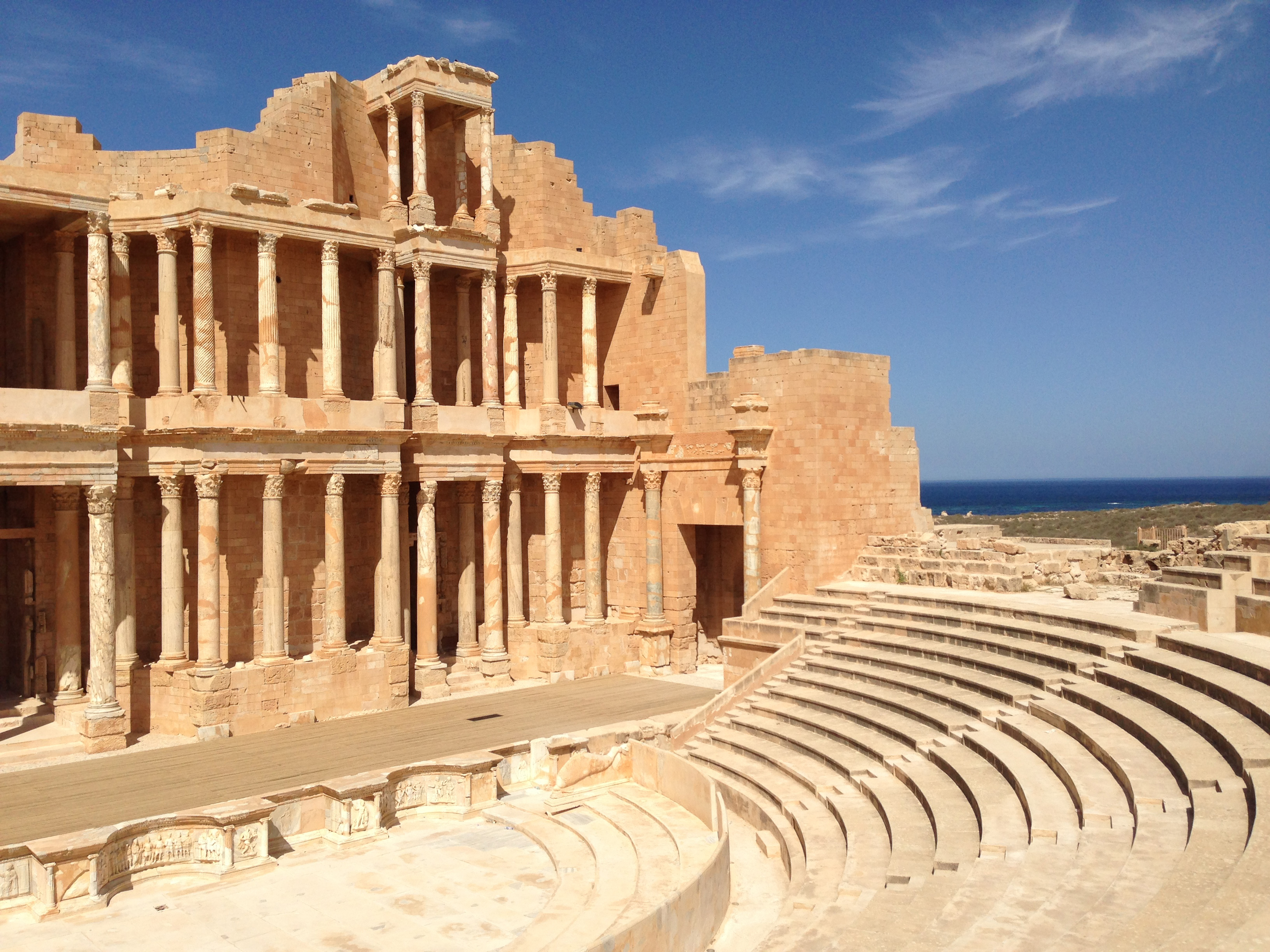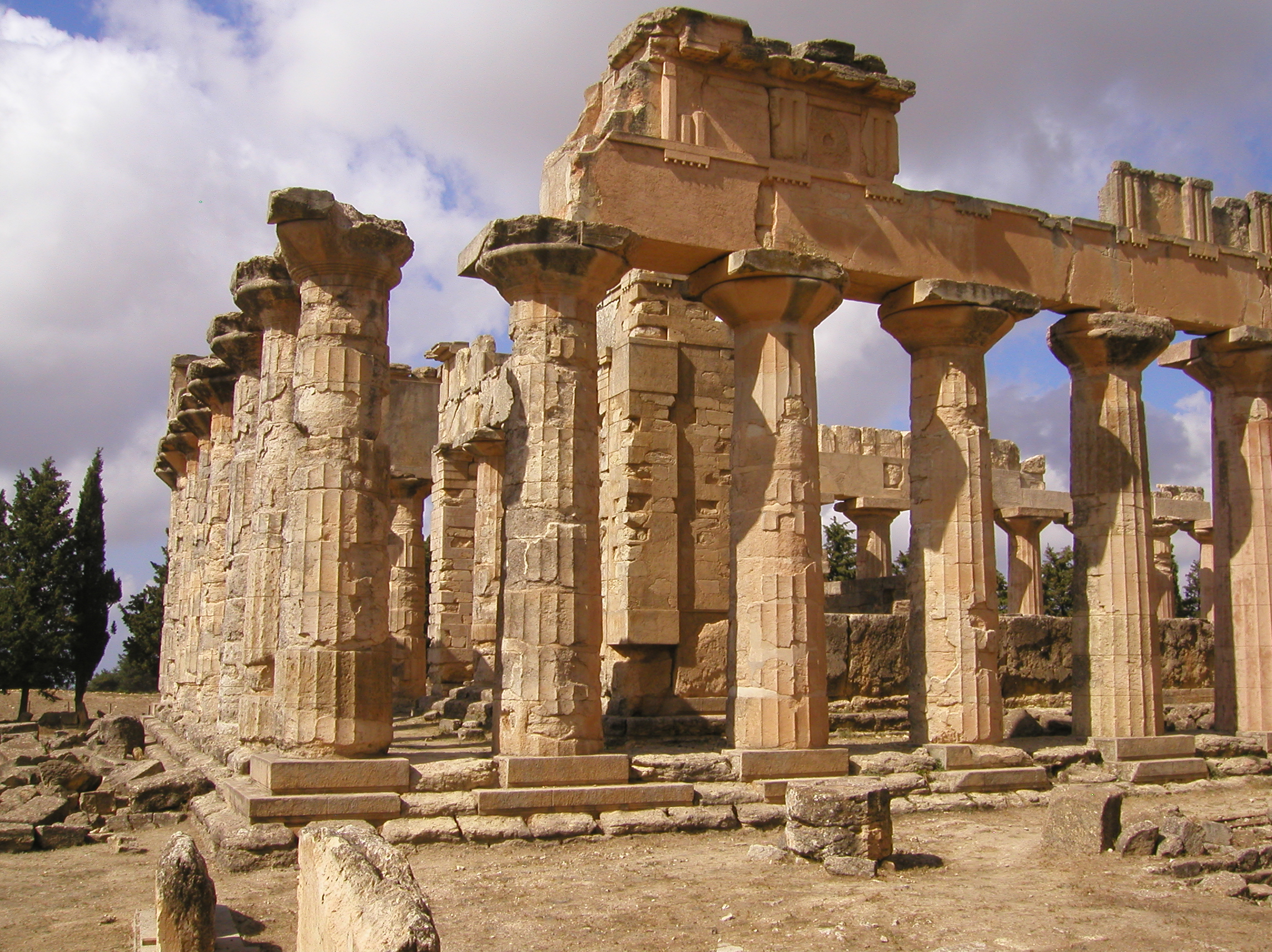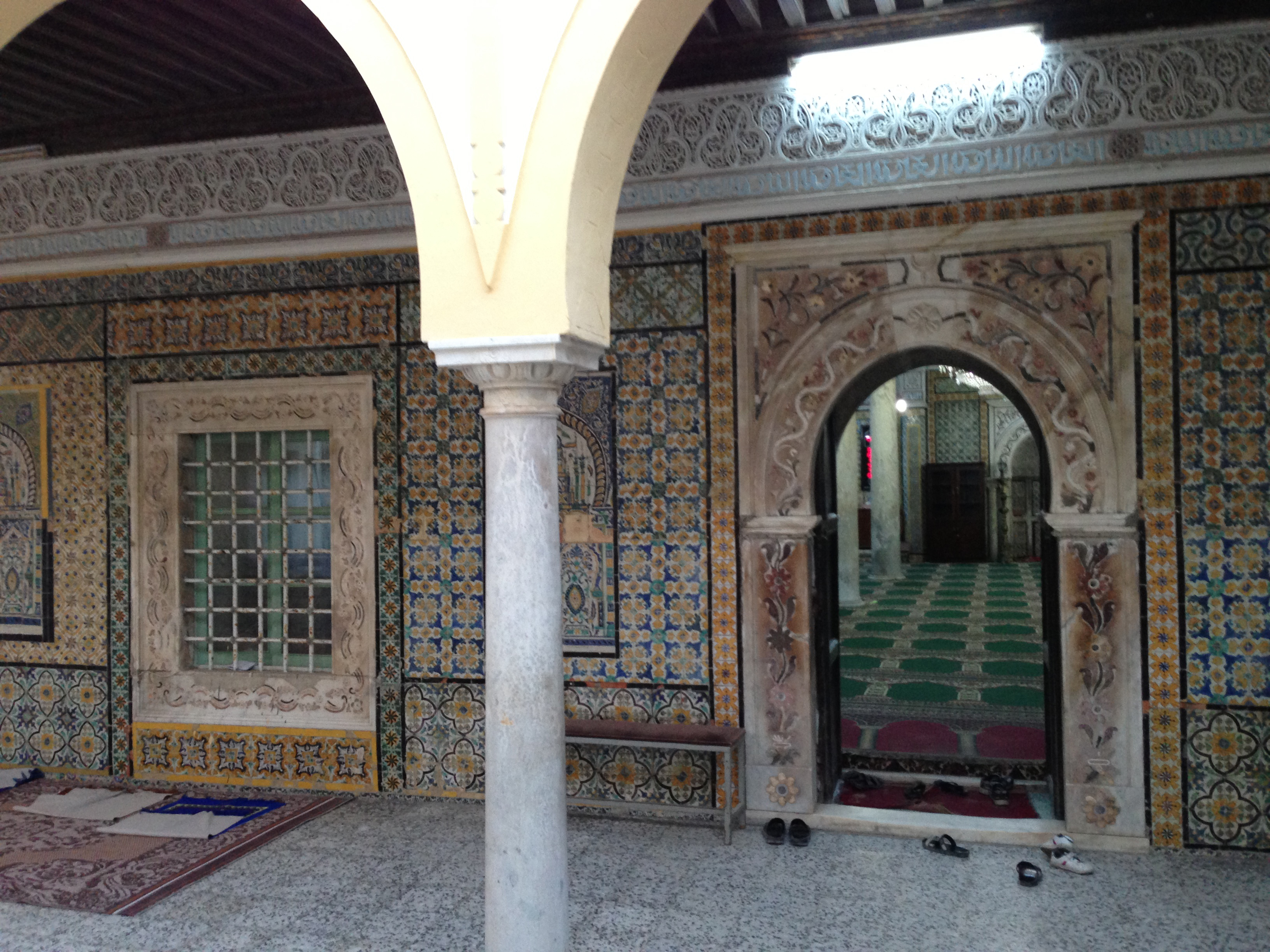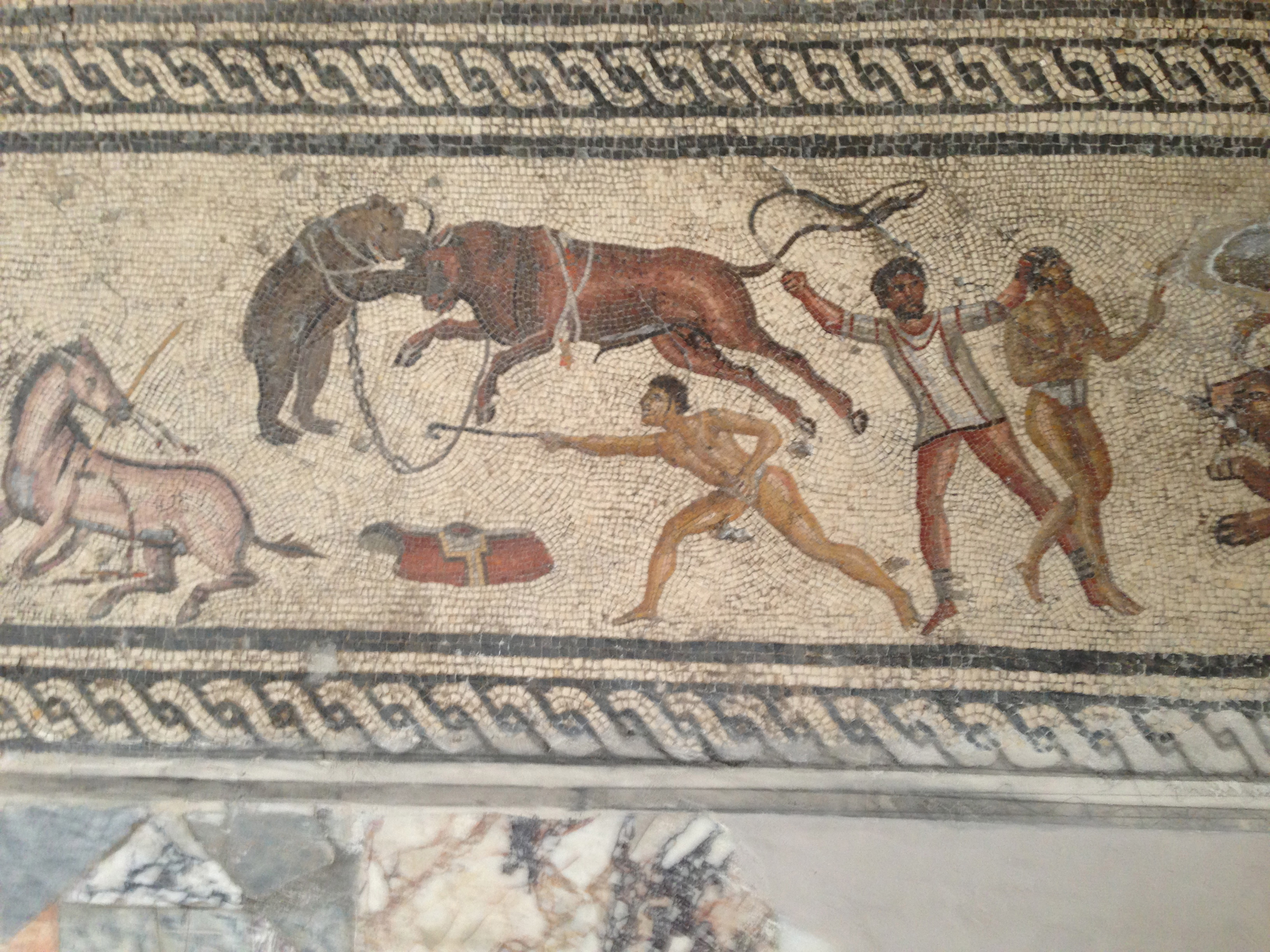
Everywhere you look in the Old City of Tripoli are banners and flags of the 'new Libya' -- in fact a flag from the time of the Kingdom. The street markets in the Old City are vibrant, perhaps because the banking system still remains volatile some twenty months after the revolution that overthrew the 42-year long Qaddafi dictatorship.

Clocktower in Old City, Tripoli. Photo by Vince Michael for GHF
Libya is a cultural landmark -- a country that stands at the crossroads of the Middle East and Africa, inhabited by nomads, merchants and religious pilgrims who have all left their mark, be it in the glorious ruins of Sabrata, Leptis Magna and Shahhat (Cyrene) or in the fierce and unbreakable spirit of the Libyan people today.

Banners in Old City, Tripoli. Photo by Vince Michael for GHF
This deeply-rooted spirit was numb under Qaddafi's rule since 1969. On a recent trip to Libya, I met with Deputy Prime Minister Dr. Sedeg Karim, and he vociferously and repeatedly stated that he wanted to give Libyans the chance to appreciate the incredible depth and richness of their history and reconnect with their national heritage.
Qaddafi saw these ancient treasures as relics of past colonialism and of no value or importance to the Libyan people; the new government sees the potential of these relics in rebuilding and strengthening the economic and social system. After all, Libya possesses some of the greatest collections of Greek and Roman architectural ruins in the world and the ancient site of Cyrene was the most important city outside the classic Hellenic empire, dubbed the "Athens of Africa". Anyone who has seen Cyrene is a witness to the grandeur of the site, a beacon of reason and beauty now emerging from one of the darkest periods of its history.

Theater at Sabratha, Libya. Photo by Vince Michael for GHF.
With the support of GHF and the A.G. Leventis Foundation, the Cyrenaica Guidebook was just released. Written by Dr. Philip Kenrick of The Society for Libyan studies, Cyrenaica is the product of 40 years of extensive research and travels - the last guide on Cyrene was published in 1945. One day very soon, we expect this book will be the companion of any eager traveler and student of history yearning to walk the footsteps of this land.

Temple of Zeus, Cyrene. Photo courtesy Global Heritage Fund.
It will require substantial effort to reverse historical consciousness of heritage implied by Gaddafi's idiosyncratic perception, one that severely limited the school curriculum to two generations of Libyans. Many of the Greek and Roman sites were simply assigned to various Western archaeologists, as if there was little local identification with them, except as targets for destruction.
The fact is, without engaging the local community from this point onward, no ancient city, monument or cultural tradition can be neither preserved nor sustained in the long term. This ideology is the DNA of our work at Global Heritage Fund (GHF). It is through the local community that we can realize the economic benefits of any cultural enterprise.
In this scope, Libya's challenges remains the same as in many places: how do you successfully integrate the community into the process? How do you economically activate the site in a way that sustains its conservation without introducing new threats? How do you ensure that conservation science is practiced at the highest standard while insuring that the long-term stewards of the site are the primary voice in its preservation?

Gurji Mosque, Tripoli. Photo by Vince Michael for GHF
The Libyan officials from the Department of Antiquities, the Ministry of Culture and the Deputy PM himself, were incredibly welcoming and together we discussed plans to bring in a team of experts to work with Libyan heritage authorities. These would not just be experts in archaeology, conservation science and architecture, but leaders in education, vocational training, tourism and economic development: these are the foundations for sustainable heritage development.
Based on this ideology, GHF is set to expand its work in Libya by asking Libyan officials what they need. Working alongside Libyan colleagues, GHF will present possible projects, including a condition assessment of heritage sites, master planning, and an intensive roundtable on modern heritage conservation techniques and practices.
While challenges such as ongoing regional factionalism still face the new Libyan government, the country bears no debt and has significant resources. In dramatic contrast to the loss in Iraq or that is currently occurring in Syria, there was virtually no heritage lost during the six-month Libyan revolution. The National Museum was untouched, for example, with the notable exception of Qaddafi's VW Beetle, which was smashed.

Mosaics in National Museum. Tripoli. Photo by Vince Michael for GHF
The Deputy PM has insisted that the future of Libya lies not in natural resources like oil, nor in agriculture nor in industry, but in the service economy. This means the resource that must be developed is the people and the key to this development is education. The Deputy PM shared his plans to rebuild the educational system and the central role that heritage must play in that development.`
Heritage is not a luxury but a foundation of civilized society, a source of identity and nation-building and by all means a source of pride and income. Models of restoration and community-based projects GHF has fostered in Colombia, Guatemala and Cambodia and are just as feasible in Libya across a range of historical structures, ancient cities, rural communities and desert fortresses that constitute an enormous, under-appreciated wealth of the Libyan nation.
Vincent Michael PhD is the Executive Director of the Global Heritage Fund in Palo Alto, California. He holds the John H. Bryan Chair in Historic Preservation at The School of the Art Institute of Chicago, where he was Director of the Historic Preservation program from 1996 to 2010. Vince is a Trustee of the National Trust for Historic Preservation, the nation's premier private preservation organization, where he serves as Vice Chair of the Preservation and Sites Committee and Vice Chair of the Diversity Task Force. He wrote this in concert with GHF Board Chair Daniel Thorne and Board Member Alia al-Senussi.